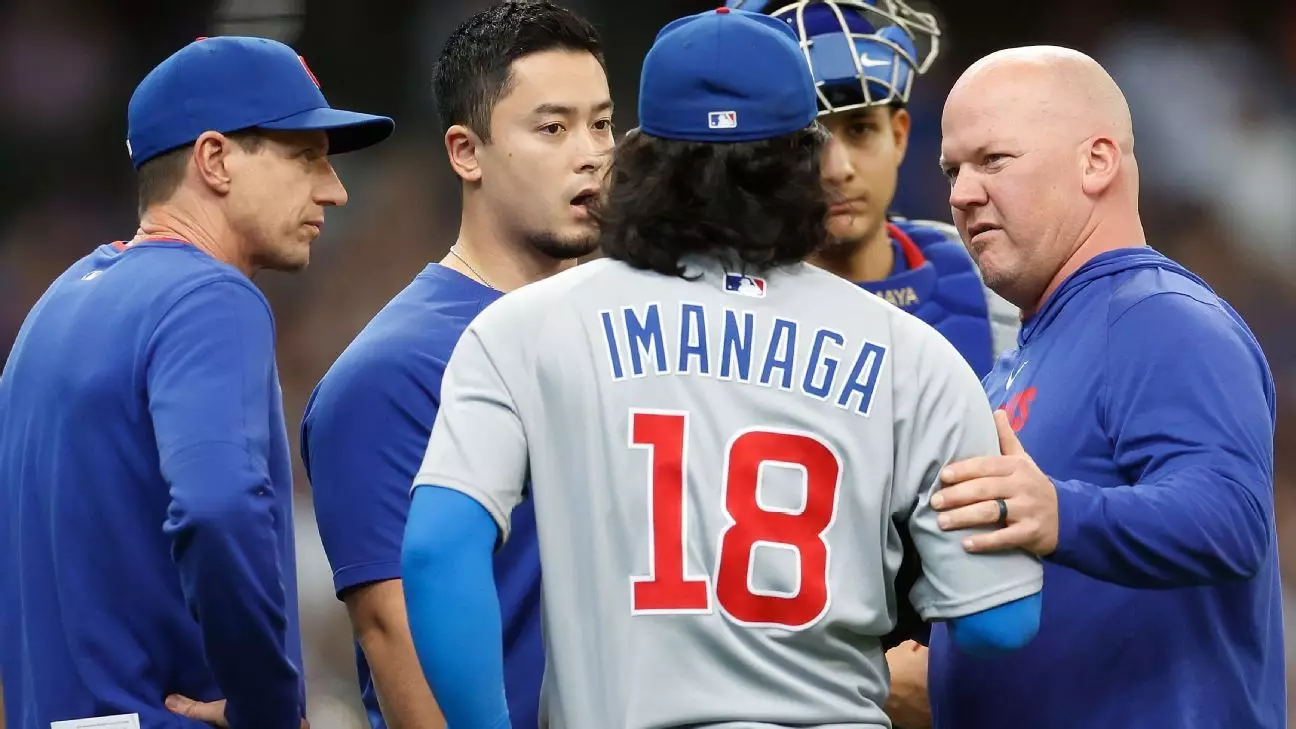Amid the bustling summer of baseball, Shota Imanaga’s transition to Major League Baseball with the Chicago Cubs has taken an unexpected turn. The left-handed pitcher’s recent injury, resulting from a mild strain in his left hamstring, raises questions not just about his personal recovery but also about team dynamics in a challenging season. This injury, while not severe, brings uncertainty, urging Imanaga to navigate uncharted waters for the first time, emphasizing the mental fortitude necessary in professional sports.
In the wake of this setback, Imanaga has chosen to maintain his focus and optimism. “It’s good that it wasn’t shoulder or elbow,” he remarked—a statement that exemplifies a seasoned athlete’s perspective, showcasing extraordinary mental resilience that is often overlooked in discussions about injuries. While it may be tempting to dwell on the negative aspects of a hamstring strain, Imanaga’s approach embodies a proactive mindset, acknowledging the injury yet striving to keep an active arm through light throwing exercises. Such an attitude is vital in an athlete’s journey, providing not only physical continuity but also emotional stability.
The Unpredictability of Recovery Timelines
One striking element in Imanaga’s situation is the inherent unpredictability that accompanies recovery from injuries, especially in high-stakes environments like Major League Baseball. The Cubs’ experience with Imanaga’s teammate, Justin Steele, serves as a cautionary tale; Steele’s hamstring strain on Opening Day led to a lengthy absence due to a subsequent elbow injury that cut his season short. As Cubs manager Craig Counsell noted, each athlete’s recovery remains a unique case, requiring tailored strategies that consider individual differences in severity and physical response.
This uncertainty has an additional layer of complexity given the significant role Imanaga plays within the Cubs’ rotation. With a current record of 3-2 and a commendable ERA of 2.82 across eight starts, his absence could exacerbate an already challenged pitching lineup. The Cubs are keenly aware of the implications, as they also contend with further injuries to other pitchers, leading to a critical moment in assessing how best to fill Imanaga’s spot while ensuring his safe return.
Learning from Experience
Imanaga proactively reached out to Steele, seeking insights into managing his situation. This peer connection speaks volumes about the culture of camaraderie often seen in professional sports. In the realm of athletic injuries, knowing you are not alone can provide a formidable boost. The shared experiences of fellow players often offer valuable lessons, enriching Imanaga’s understanding of the recovery process.
While he acknowledged the factors contributing to his injury, Imanaga also reflected on the broader strategies for his preparation. His insight reveals that injuries are as much about physical conditions as they are about mental readiness and strategy. The best athletes comprehend the intricate dance between preparedness and adjustment, signaling a vital lesson for both Imanaga and younger players witnessing his journey.
The Road Ahead and Team Dynamics
The Cubs now face the challenge of redefining their strategy without Imanaga while they await his return. With potential options like Cade Horton and Chris Flexen vying for a chance to showcase their talents, the team’s resilience will be tested. Yet, this situation fosters opportunity amidst adversity—creating a chance for emerging talent to step up and make their mark on the season.
Imanaga’s path ahead may be fraught with challenges, but the way he approaches his recovery could serve as an inspiring tale of resilience in the face of adversity. The delicate interplay of patience, proactive mental engagement, and reliance on team support systems plays a pivotal role in his journey. As Imanaga continues to heal, fans and teammates alike should watch closely—not just for the outcome of his recovery but for how he navigates this challenging chapter in his career. His journey is an authentic testament to the spirit of sportsmanship, underscoring the idea that injuries, while setbacks, also pave the way for growth and resilience in the sporting world.

